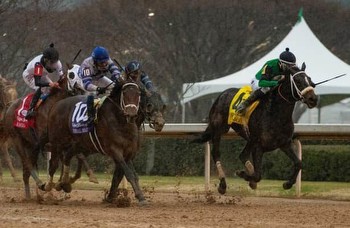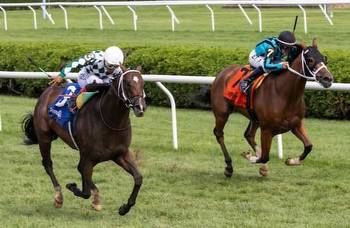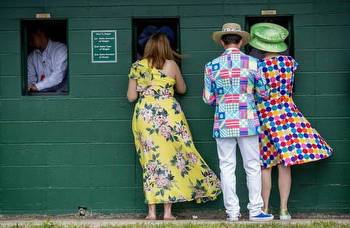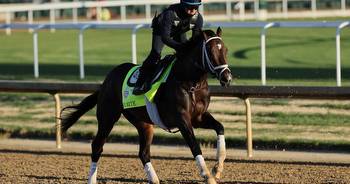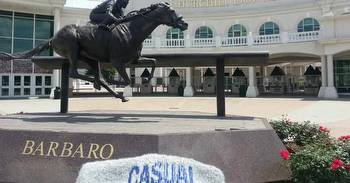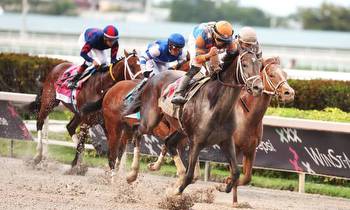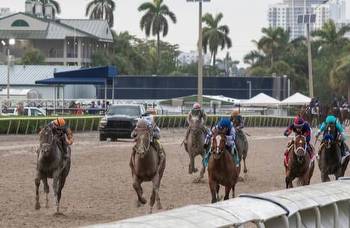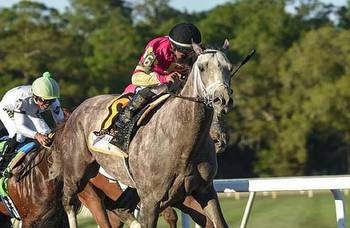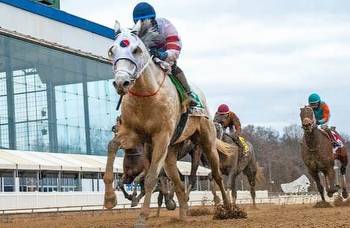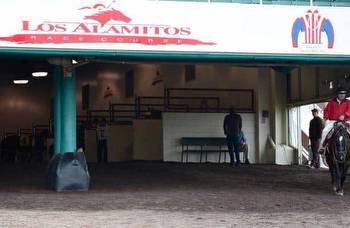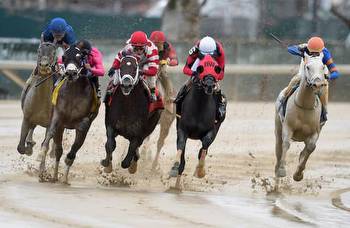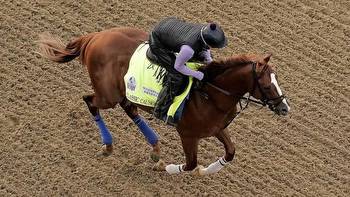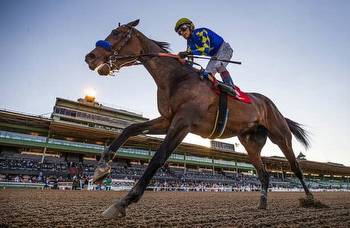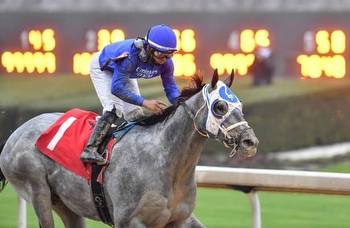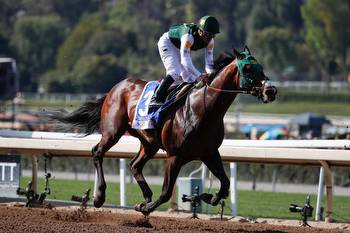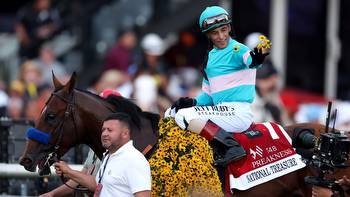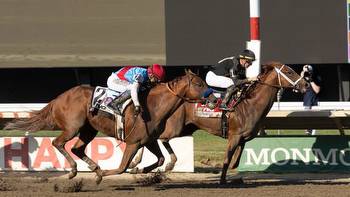Are final fractions the key to winning Kentucky Derby picks?
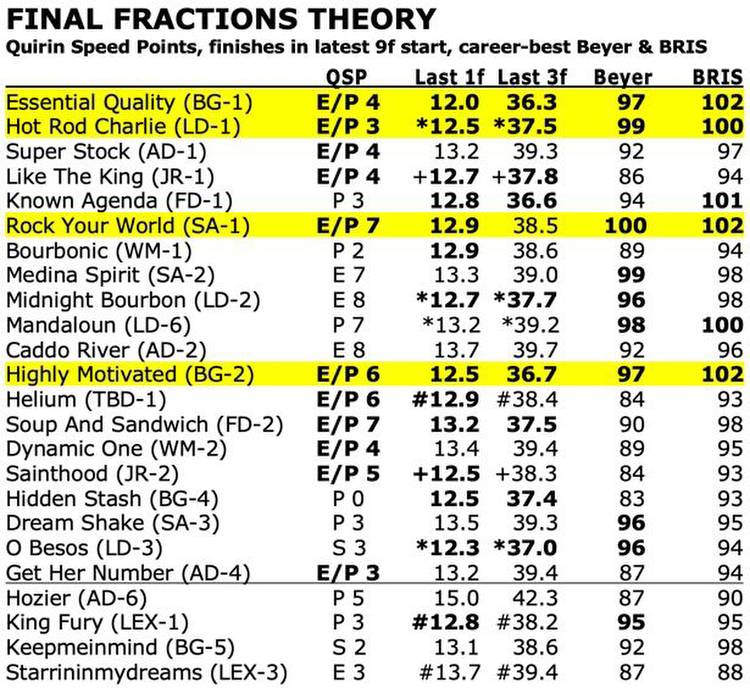 Tools & Tips to Win Big on Kentucky Derby 2021!
Tools & Tips to Win Big on Kentucky Derby 2021!- All Derby handicapping
- Free Derby PPs
- Expert sets Derby Odds
- Derby Odds & Analysis
- Fastest Derby speed figs
- Get expert Derby picks!
- 90% of Derby winners...
- Derby pedigree analysis
- 10 Derby Secrets (FREE)
- (VIDEO) 30-1 Longshots
The name PhilThomas does not appear in present-day past performances. The last race on histraining record was run more than three years ago. His last winner was at theend of the summer of 2013. But something he said resonates to this day with horseplayershandicapping the Kentucky Derby.
“I bet if youlooked at it,” he said, “horses that won the Derby came fast the lastquarter-mile of their last prep.”
That was howJennie Rees recalled a seminal conversation years ago with Thomas. Now a publicistfor racetracks and a horsemen’s association, Rees back then was a respectedturf writer for The Courier-Journal. She was a turf writer. She is stillrespected, more now than ever.
Thomas’s wordswere the proverbial bug that went in Rees’s ear, and it resulted in hercreation of the Final Fractions Theory, a proven prism to separate potentialDerby winners from flashy pretenders. It was not without some finagling ofThomas’s original theorem about the final quarter of a horse’s last prep atnine furlongs.
“The problemis I couldn’t compute that because of how fractions are published for a one-milerace,” Rees said when she explained the theory in 2017. “But I could computethe last eighth and the last three-eighths, and I found there is a pattern,definitely.”
Pattern? It isnearly a requirement. Of the last 31 Derby winners, 27 met one of the followingconditions in their final prep race:
* Finish the last furlong in 13.0 seconds or less.
* Finish thelast three furlongs in 38.0 seconds or less.
It is anotherway to answer the biggest question coming into a typical Kentucky Derby. Can a3-year-old horse that has never before raced more than 1? miles be effectiveadding 220 yards? The Final Fractions Theory is a way to predict that. If ahorse had a fast finish at the end of his last prep, chances are he will carrythat momentum that extra furlong in the Derby.
Last year thetheory did not work, but that was because the 3-year-olds were really3½-year-olds, and there was not so much mystery about that last eighth of amile. The Kentucky Derby was a September anomaly, complete with horses that hadalready gone 1¼ miles before they even arrived at Churchill Downs. Against Tizthe Law, a proven winner at the Derby distance, Authentic was not supposed tobe able to go 10 furlongs. Oops.
So rewritethat to say 27 of the last 30 springtime renewals of the Derby in which theFinal Fractions Theory has worked.
Of the horsesexpected to be entered in Tuesday’s draw, there are 13 that meet at least oneof the FFT criteria. Best-priced at 3-1 in Las Vegas futures, Essential Qualityis among the nine that meet both. He went a blistering 12.0 seconds in the lastfurlong and 36.3 in the last three of his narrow victory this month in the BlueGrass Stakes.
Medina Spirit,trainer Bob Baffert’s best hope for a record seventh Kentucky Derby win, went13.3 and 39.0 to finish his second-place finish in the Santa Anita Derby. Crosshim off.
Narrowing the listof potential Derby winners to 13 is only the first step. Since VSiN took on thetask of tracking the data in Rees’s FFT, some steps have been added.
Take the figs.Please. Set the bar for the Daily Racing Form’s Beyer Speed Figures at95 and Churchill Downs’ BRIS Speed Ratings at 100. Those also have proven to bewinning baselines. Of the last 29 Derby winners, 26 came into the race with a career-bestBeyer of at least 95. Eighteen of the last 21 had a BRIS of at least 100.Country House in 2019, asterisks and all, was the last exception to both.
Apply theminimum Beyers and BRIS, and that list of 13 horses is reduced to four –Essential Quality (12.0 last furlong, 36.3 last three, 97 Beyer, 102 BRIS),Louisiana Derby winner Hot Rod Charlie (*12.5, *37.5, 99, 100), undefeatedSanta Anita Derby winner Rock Your World (12.9, 38.5, 100, 102) and Blue Grassrunner-up Highly Motivated (12.5, 36.7, 97, 102).
Whoa. How didRock Your World’s 38.5 get in there? And what is the deal with the asterisks onHot Rod Charlie?
First thing’sfirst. The key word in the FFT is “or.” Did a horse stay within 13.0 for thelast furlong – “or” – 38.0 for the last three? One or the other is fine, andthat is why Rock Your World makes the cut. Only 23 of the last 31 Derby winnersmet both thresholds, so the FFT double is not historically as successful.
Then theasterisks. Hot Rod Charlie gets them, because the Louisiana Derby was extendedlast year to 9½ furlongs. That was to try and make the race more equitable forhorses drawn wide that were facing a quick run to the first turn at FairGrounds. For the FFT, that required extrapolation of the chart times – and aslippery statistical slope. Once math is used to concoct new figures,handicappers enter at their own risk.
The same thinghappens when trying to grade undefeated Helium’s last prep, the 8½-furlongTampa Bay Derby. Are we really sure he would have run that last furlong in 12.9seconds if the time for those last 110 yards was not simply multiplied by two?Of course not.
And what aboutLike The King’s 12.7 and 37.8 at the end of the Jeff Ruby Steaks? How do timeson a synthetic track translate? Animal Kingdom was an exception to the FinalFractions Theory when he finished first on the Turfway Park plastic 10 yearsago on his way to winning the roses. That sample size is way too small to bereliable, especially on a racetrack that has not been much of a proving groundfor the Derby.
Critics saythe FFT does not take into account horses that are wrapped up late in certainvictories. But history has graded it. Again, 27 for 31. That goes back to whenBush was president. The first Bush. It was so long ago that the twin spiresmight still have been the tallest structures at Churchill Downs.
Oh, one morething. This is about to be the ninth Kentucky Derby that has used a pointssystem to qualify horses from designated prep races. Of the first eightrunnings, Orb in 2013 and Country House in 2019 were the only closers to havewon. That is quantified by their Quirin Speed Points or, simply put, an E orE/P designation for the forwardly placed. The small sample says horses arebetter served racing near the front all the way around the track rather thanwaiting until late to come in from the clouds. Eleven of the 20 would-bestarters have E or E/P designations, and again they include Essential Quality,Hot Rod Charlie, Rock Your World and Highly Motivated.
That is it. Ifthe formula that Thomas inspired, Rees authored and VSiN refined holds anywater, one of those four horses will win next Saturday in the Kentucky Derby.
If you believethat is a sure thing, I happen to have a housing tract underneath the Big FourBridge available at a nice price.
Listed in order of qualifying, here are the potential Kentucky Derby starters with their Quirin Speed Points, final fractions from the last furlong and last three furlongs of their last preps, best Beyer and best BRIS:
Line separates current top 20 from potential also-eligibles.
Race abbreviations: AD – Arkansas Derby (OP), BG – Blue Grass (KEE-t), FD – Florida Derby (GP-t), +JR – Jeff Ruby Steaks (TP), *LD – Louisiana Derby (FG), #Lexington (KEE-t), SA – Santa Anita Derby (SA-t), TBD – Tampa Bay Derby (TAM), **UAE Derby (MEY-t), WM – Wood Memorial (AQU-t).
Number after hyphen indicates the place the horse finished the race. t=Trakus.
QSP: Quirin Speed Points.
Last 1f: Last furlong of final prep at 9f (rounded to nearest tenth of a second).
Last 3f: Last three furlongs of final prep at 9f (rounded to nearest tenth of a second).
Beyer: Career-best Beyer Speed Figure.
BRIS: Career-best Brisnet Speed Figure.
Bold denotes meeting one; yellow denotes meeting all four of the following criteria:
E/P Quirin Speed Points: Since 1st year of prep points 5 of 8 Ky.Derby winners had E/P designations as did DQ’d Maximum Security (2019).
Last 1f/3f:
13.0 seconds or less forthe last furlong for a final,nine-furlong dirt prep (rounded to the nearest tenth).
38.0 seconds or less forthe last three furlongs for a final,nine-furlong dirt prep (rounded to the nearest tenth).
Since1990, 27 of 31 Ky. Derby winners met one or the other (23 of 31 met both).
Beyer Speed Figure (courtesy DailyRacing Form) – 95 or better career-best. Since 1992, 26 of 29 Kentucky Derbywinners met that.
Brisnet Speed Rating – 100or better career-best. Since 2000, 18 of 21 Kentucky Derbywinners met that.
+Synthetictrack.
*Becauserace was 9½f, last 1f is 66.7% of final 1½f on chart, and last 3f are 85.7% offinal 3½f.
#Becauserace was 8½f, last 1f is double the final ½f on chart, last 3f are 1.2 timesthe final 2½f.

